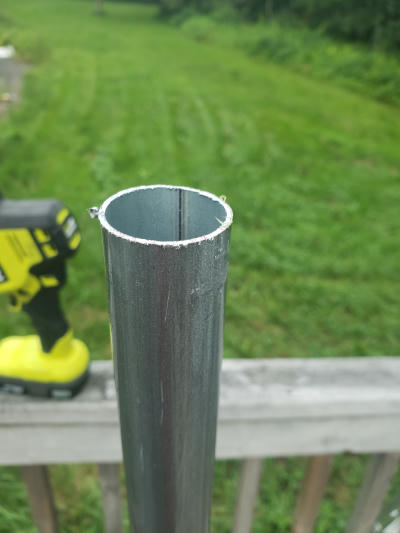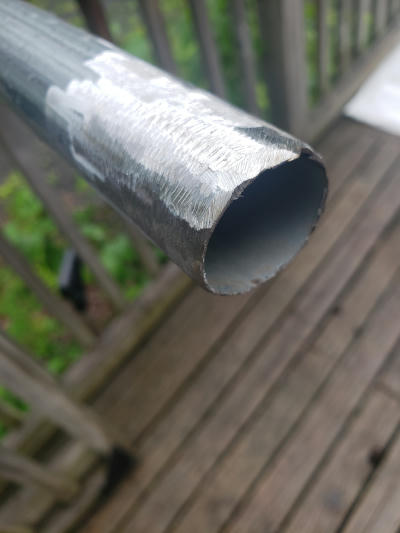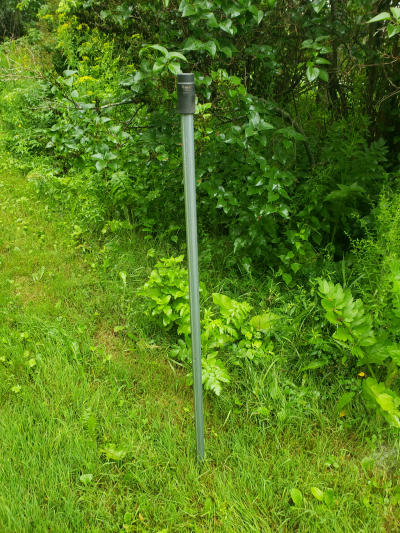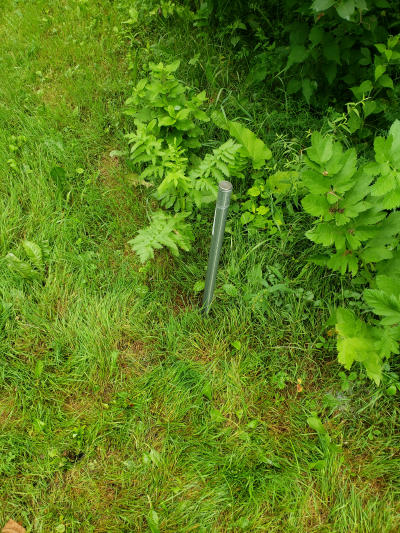As a ham radio operator, my property is covered in antennas. Until recently, they've all been bolted to my deck in one way or another. This has been working fine, but cross-talk has been causing front-end desensitization issues. As I have an acre of land to play with, I needed to start raising antenna masts that could stand on their own.
The basic idea was to get a chain-link fence top rail into the ground, somehow, and then add more on top as needed. The ends of the rails are designed so that they slot into each other. As it turns out, getting a top rail into the ground is surprisingly difficult! I wanted to get it at least a few feet into the ground. It needs to be below the frost line, otherwise it may work itself over many freeze/thaw cycles.
The first step is to cut the rail down. We're going to be hammering it into the ground so it's important it's not too tall - otherwise it'll be hard to hit accurately with any amount of force.
Here's the newly cut section of rail. It's much too thick to hammer into the ground - trust me! We'll need to grind it down first. I used an angle grinder to sharpen the rail. As a bonus, it cleans up some of the burrs. Just remember, "galvanized" is Latin for "wear breathing protection"!
It's not the prettiest thing ever, but it works. At this point it can be inserted into the ground. I do this by basically "throwing" it into the dirt, pointy end first. It won't go in very far, but it'll at least be able to hold itself up.
Next, I put an impact-rated socket over the end of the pole. The idea is to hammer the socket. Without it, all of the energy is expended deforming the end of the pole, and it doesn't get any deeper into the ground. Make sure the pole is very straight when hammering. Otherwise, your entire mast will have a lean to it!
Here's the pole after hammering. It's around 2-3 feet into the ground. Even with the socket, the tip is still slightly mangled, so it'll have to be cut off.
I had some spare sections of fibreglass pole, so I ended up using them for my antenna mast. I slipped them over the end of the rail sticking out of the ground. It worked reasonably well, but there's a bit of slack which manifests itself as a leaning mast.
Overall, once I got the technique figured out, it was easy enough to implement. I look forward to installing more masts on my property. One concern I have is if the poles will rust over time. The soil is damp and the rail's protective zinc coating has been ground off. I hope other people find this post helpful for their own mast installations!






